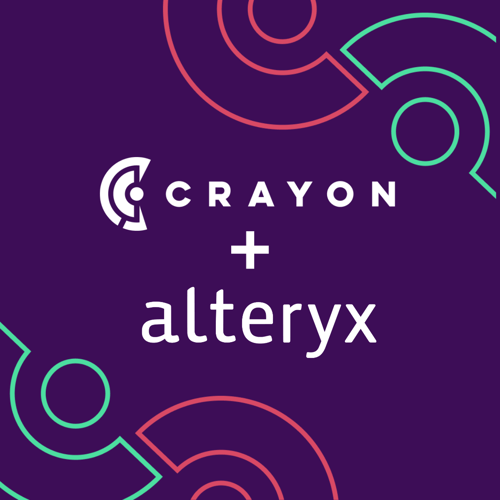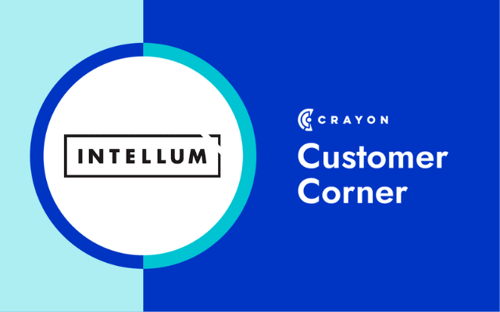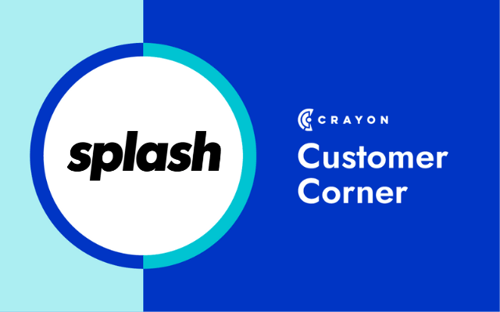In our fifth installment of the Crayon Customer Corner, we sat down with Dan Dearing — Senior Director of Product Marketing at SafeGuard Cyber. As a competitive intelligence team of one who maintains 19 battlecards and tracks nearly 40 competitors across his entire competitive landscape, Dan understands the importance of generating adoption for your CI program.
Read on to learn how Dan used Crayon to boost battlecard adoption rates at SafeGuard Cyber — and increased competitive win rates along the way.
1. This is your second time buying and onboarding Crayon. What made you come back for more when you joined SafeGuard Cyber?
At my previous job I was in the same role, but instead of being a one-person CI team I was on a two-person team. Our product portfolio was very big and we had a large number of different types of competitors we had to track. Crayon really became a force multiplier for us, in that it made it much easier for us to split that responsibility.
So, when I came here and became a CI team of one, it was a no-brainer to put Crayon in place.
It really comes down to the fact that Crayon has automated most of the CI information collection. Crayon makes it easy for me to keep up with all of our competitors and make sure that I am able to give the sales team real-time information.
2. Your team has stellar battlecard adoption rates. What strategies do you use to incite ongoing battlecard adoption at SafeGuard Cyber?
A lot of sellers come out of environments where their battlecards are static. They are either in a PowerPoint or Word doc, and updated once a quarter at most. Knowing that the intel on their battlecards is real-time has been a huge motivation for the sellers to engage with them.
Another way we encourage adoption is by adding an interactive nature to the battlecards. We encourage people to leave comments and share what they find in the field.
But most importantly, we repurposed the Leaderboard in Crayon into a “Call a friend” tile. When sellers are up against a specific competitor they can see who has won against them in the past, so they can connect and ask what strategies they used to win — that combined with the dynamic information in the battlecards motivates the team to engage.
3. Due to those efforts, your team is rocking a 59% competitive win rate! How has increased adoption led to a higher competitive win rate?
That competitive win rate is super useful, we use that a lot. Being able to click on a competitor and see your win rate and your Salesforce deals associated with them makes it really easy to understand how effective we are against that competitor.
I also meet monthly with the Sales leadership team to discuss the data and our usage of the platform.
4. What is the difference between an okay battlecard and a battlecard your sellers actually want to adopt?
There are three factors of a great battlecard: that they are dynamic, that they are interactive, and that they are easy to digest with tiles and organized information.
But the biggest test is: Can you associate the battlecard with revenue?
This has made a huge difference at SafeGuard. Now — to show the real difference that adopting battlecards makes — I can go to my boss and show the ROI of Crayon. To demonstrate the value of competitive intelligence, data speaks louder than anecdotal evidence.
5. To close the loop on our conversation, let's talk battlecard maintenance. What best practices can you share around updating and sharing battlecards with your team?
I host a CI roundup monthly meeting with the sales team for feedback on all battlecards and to talk in real-time about what is new in Crayon.
Updating battlecards is part of my routine of spending 30 minutes a day with Crayon and only making updates when I see something relevant I’ve learned. Then it’s about making battlecards easy to consume. Sellers can access them directly in Crayon or in Salesforce — ease of access is an important piece of the adoption puzzle.
Competitors we see frequently and have a strong track record of going up against all have battlecards, but the competitors we see less frequently or are starting to hear about are on a watch list board. Then, when I see one of those competitors popping up more frequently in our Salesforce pipeline or internal chatter, that’s when I create the battlecard for them.
It takes effort to create and maintain battlecards, so for a CI team of one it’s important to focus your efforts in the right places. I use the impact page to figure out from a historical perspective how we’re doing against a specific competitor. It gives me an idea of how I should be prioritizing my battlecard maintenance efforts.
.jpg)
Related Blog Posts
Popular Posts
-
 The 8 Free Market Research Tools and Resources You Need to Know
The 8 Free Market Research Tools and Resources You Need to Know
-
 How to Measure Product Launch Success: 12 KPIs You Should Be Tracking
How to Measure Product Launch Success: 12 KPIs You Should Be Tracking
-
 24 Questions to Consider for Your Next SWOT Analysis
24 Questions to Consider for Your Next SWOT Analysis
-
 How to Create a Competitive Matrix (Step-by-Step Guide With Examples + Free Templates)
How to Create a Competitive Matrix (Step-by-Step Guide With Examples + Free Templates)
-
 6 Competitive Advantage Examples From the Real World
6 Competitive Advantage Examples From the Real World



